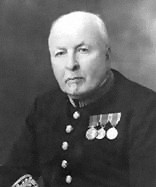Lieutenant Governor of Manitoba
| Lieutenant Governor of Manitoba | |
|---|---|
Her Honour the Honourable | |
| Residence | Government House, Winnipeg |
| Appointer | The governor general on the advice of the prime minister |
| Term length | At the governor general's pleasure |
| Formation | 15 July 1870 |
| First holder | Sir Adams George Archibald |
| Website | www |
The lieutenant governor of Manitoba (
Role and presence
The lieutenant governor of Manitoba is vested with
At these events, the lieutenant governor's presence is marked by
History



The office of lieutenant governor of Manitoba came into being in 1870, upon Manitoba's entry into
In 1919, the Manitoba legislature voted in favour of The Initiative and Referendum Act, which sought to eliminate the lieutenant governor from the legislative process in the province.
Lieutenant Governor George Johnson was called upon to use his reserve powers in March 1988. The governing New Democratic Party (NDP) lost its thin majority in the legislature when one of its Members of the Legislative Assembly, Jim Walding, moved to an opposition party and voted along with the rest of the opposition against the proposed budget, a matter of confidence and supply. Johnson thereafter dissolved the legislature and called an election and the premier, Howard Pawley, announced his resignation both as premier and as leader of the NDP.[10] Pawley felt that he could "hand over the premiership" to whoever succeeded him as party leader.[11] Johnson, however, retained Pawley as premier, waiting until after the provincial election to appoint a successor, so that whoever was by then NDP leader could face and test the confidence of the legislature,[12] should the NDP even win. The NDP failed to win the election, regardless.
See also
- Monarchy in the Canadian provinces
- Government of Manitoba
- Lieutenant governors of Canada
References
- Victoria (29 March 1867). "Constitution Act, 1867". V.58. Westminster: Queen's Printer. Retrieved 15 January 2009.)
{{cite journal}}: Cite journal requires|journal=(help - ^ Hoye, Bryce (2022-10-24). "Anita Neville sworn in as 1st Jewish lieutenant-governor of Manitoba". CBC News. Retrieved 2022-10-25.
- ^ Office of the Lieutenant Governor of Manitoba. "Awards > Order of Manitoba > Summary of Provisions". Queen's Printer for Manitoba. Retrieved 21 June 2009.
- ^ "Canada Wide > About Us > The Order of St. John > The Order of St. John in Canada". St. John Ambulance Canada. Retrieved 2 June 2009.
- ^ Office of the Lieutenant Governor of Manitoba. "Awards". Queen's Printer for Manitoba. Archived from the original on December 5, 2008. Retrieved 2 July 2009.
- ^ Berezovsky, Eugene (2009). Staff of Canadian Monarchist News (ed.). $1.52 per Canadian: The Cost of Canada's Constitutional Monarchy (PDF) (4 ed.). Toronto: Monarchist League of Canada. p. 3. Archived from the original (PDF) on 7 July 2009. Retrieved 15 May 2009.
- Victoria (12 May 1870). "Manitoba Act, 1870". 6. Westminster: Queen's Printer. Retrieved 16 June 2009.)
{{cite journal}}: Cite journal requires|journal=(help - ^ Webber, Jeremy (1997). "The Legality of a Unilateral Declaration of Independence under Canadian Law" (PDF). The McGill Law Journal. 42 (2). Montreal: McGill University: 290. Archived from the original (PDF) on 6 July 2011. Retrieved 3 March 2011.
- ^ Rose, John Holland (1940). The Cambridge history of the British Empire: The Growth of the new Empire, 1783-1870. Vol. 2. Cambridge: Cambridge University Press. p. 688.
- ^ Donovan, Davis S. (27 May 2009), The Governor General and Lieutenant Governors: Canada's Misunderstood Viceroys (PDF), Canadian Political Science Association, p. 9, retrieved 22 October 2012
- ISBN 978-1862877009.
- ^ Donovan 2009, p. 10
